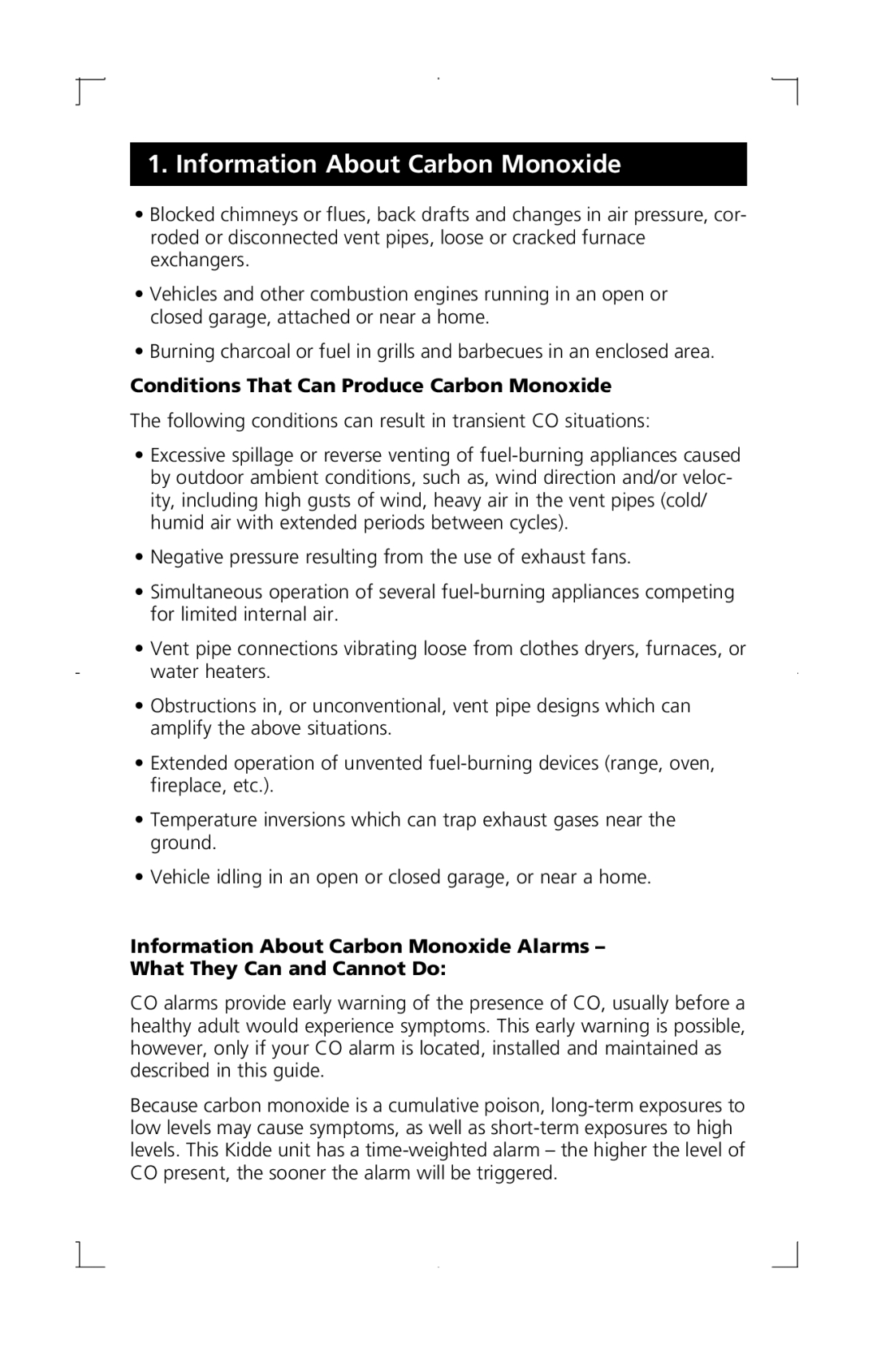
1.Information About Carbon Monoxide
•Blocked chimneys or flues, back drafts and changes in air pressure, cor- roded or disconnected vent pipes, loose or cracked furnace exchangers.
•Vehicles and other combustion engines running in an open or closed garage, attached or near a home.
•Burning charcoal or fuel in grills and barbecues in an enclosed area.
Conditions That Can Produce Carbon Monoxide
The following conditions can result in transient CO situations:
•Excessive spillage or reverse venting of
•Negative pressure resulting from the use of exhaust fans.
•Simultaneous operation of several
•Vent pipe connections vibrating loose from clothes dryers, furnaces, or water heaters.
•Obstructions in, or unconventional, vent pipe designs which can amplify the above situations.
•Extended operation of unvented
•Temperature inversions which can trap exhaust gases near the ground.
•Vehicle idling in an open or closed garage, or near a home.
Information About Carbon Monoxide Alarms – What They Can and Cannot Do:
CO alarms provide early warning of the presence of CO, usually before a healthy adult would experience symptoms. This early warning is possible, however, only if your CO alarm is located, installed and maintained as described in this guide.
Because carbon monoxide is a cumulative poison,
